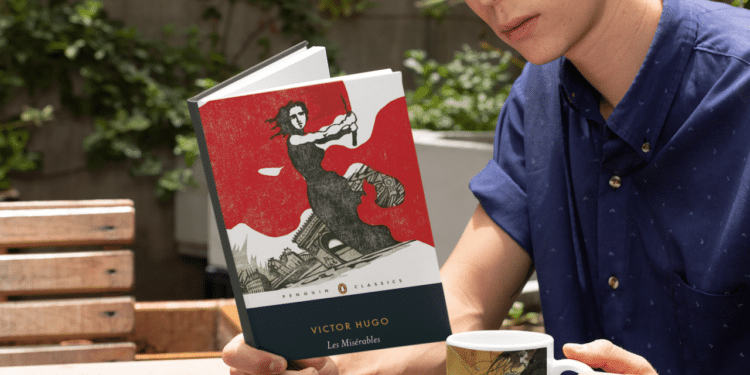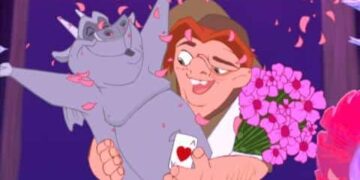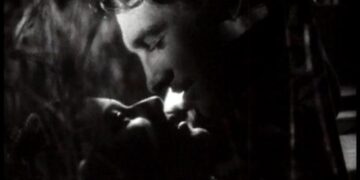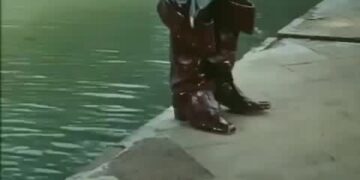Victor Hugo, a renowned French writer of the 19th century, left an indelible mark on the world of literature, cinema, and media. His works, characterized by their depth, social commentary, and vivid imagery, continue to captivate audiences to this day. In this article, we will delve into Victor Hugo’s biography, explore his impact on cinema and media, journey through the iconic locations in his books, examine the relationships that influenced his writing and personal life, and reflect on the enduring legacy of his works.
Exploring Victor Hugo’s Biography
Victor Hugo was born on February 26, 1802, in Besaní§on, France. He grew up in a family of modest means, with his father being a general in Napoleon’s army. Despite an unstable political climate during his early years, Hugo received an excellent education and displayed a remarkable talent for writing from a young age. His early works, such as “Hans of Iceland” and “Bug-Jargal,” showcased his ability to craft gripping narratives and explore complex themes.
As Hugo matured, his writing evolved, and he began to tackle more significant societal issues. His most famous novel, “Les Misérables,” published in 1862, delves into the plight of the poor and marginalized in French society. This masterpiece solidified Hugo’s place as one of the greatest literary figures of his time and continues to be celebrated for its powerful message of compassion and redemption.
Victor Hugo’s Impact on Cinema and Media
The enduring popularity of Victor Hugo’s works is evident in the numerous books and characters that have been adapted into movies, plays, and other forms of media. “Les Misérables” alone has seen countless adaptations, including the highly acclaimed musical and the 2012 film adaptation starring Hugh Jackman and Anne Hathaway. The tragic tale of Jean Valjean and his pursuit of redemption resonates with audiences across generations, proving the timelessness of Hugo’s storytelling.
Beyond “Les Misérables,” other works such as “The Hunchback of Notre-Dame” and “The Man Who Laughs” have also found success in the world of cinema. These adaptations not only showcase the enduring appeal of Hugo’s narratives but also highlight his ability to create memorable characters and explore the depths of human emotion.
The Main Places Where Victor Hugo’s Books Are Set
Victor Hugo’s books are not only known for their compelling characters and thought-provoking themes but also for the vivid and iconic locations in which they are set. From the bustling streets of Paris in “Les Misérables” to the Gothic grandeur of Notre-Dame Cathedral in “The Hunchback of Notre-Dame,” Hugo’s descriptions transport readers to the heart of these settings, making them come alive on the page.
In “Les Misérables,” the city of Paris itself becomes a central character, with its narrow alleys and grand boulevards providing a backdrop for the struggles of the book’s protagonists. Hugo’s intricate descriptions of the cityscape and its social divisions add depth and realism to the narrative, immersing readers in the world of 19th-century France.
Victor Hugo’s Love Life and Friendships
Victor Hugo’s writing and personal life were deeply intertwined, and his relationships played a significant role in shaping both. One of the most influential figures in Hugo’s life was his wife, Adí¨le Foucher. Their passionate and tumultuous relationship inspired much of Hugo’s work, particularly his poetry. Adí¨le’s unwavering support and understanding fueled Hugo’s creativity and provided him with emotional stability amid the challenges he faced.
In addition to his romantic relationships, Hugo cultivated friendships with other notable figures of the time, including Charles Augustin Sainte-Beuve and Alexandre Dumas. These friendships not only offered Hugo intellectual stimulation and camaraderie but also provided a platform for the exchange of ideas and artistic inspiration. The impact of these relationships on Hugo’s writing is evident in the depth of his characters and the complexity of his themes.
Victor Hugo’s Views on Backbiting and Gossip
Victor Hugo was a keen observer of society and its flaws, often criticizing the vices that plagued his contemporaries. Backbiting and gossip were among the social behaviors that Hugo condemned, recognizing their destructive nature and the harm they inflicted on individuals and communities. In his writings, he highlighted the corrosive effects of gossip and the power of rumors to ruin reputations and perpetuate injustice.
Hugo’s disdain for backbiting and gossip can be seen in his characters as well. In “Les Misérables,” the character of Javert embodies the destructive nature of an individual consumed by judgment and rumor. Through this character and others, Hugo warns of the dangers of idle talk and reminds us of the importance of empathy and understanding.
Victor Hugo’s Rich or Poor
One of the recurring themes in Victor Hugo’s works is the stark contrast between the rich and the poor. He vividly portrays the social inequalities of his time and highlights the suffering endured by the marginalized and impoverished. Through his narratives, Hugo challenges societal norms and calls for a more equitable world.
In “Les Misérables,” Hugo presents a stark portrayal of poverty and the struggles faced by the underprivileged. Characters like Fantine and Jean Valjean represent the harsh realities of life for those on the fringes of society. Through their stories, Hugo emphasizes the need for compassion and social justice, urging readers to confront the injustices that exist in their own communities.
Best Quotes from Victor Hugo’s Works
Victor Hugo’s works are replete with powerful and thought-provoking quotes that continue to resonate with readers today. These quotes encapsulate the essence of his writing, capturing the depth of his characters’ emotions and the timeless truths he sought to convey. Here are a few notable quotes from Hugo’s works:
- “To love or have loved, that is enough. Ask nothing further. There is no other pearl to be found in the dark folds of life.” – from “Les Misérables”
- “Laughter is sunshine; it chases winter from the human face.” – from “Les Misérables”
- “To love beauty is to see light.” – from “The Hunchback of Notre-Dame”
These quotes, among many others, showcase Hugo’s ability to distill complex emotions and ideas into simple yet profound statements, leaving a lasting impact on readers.
Other Artists Who Inspired Victor Hugo
While Victor Hugo’s genius is undeniable, he was not immune to the influence of other artists and thinkers of his time. The Romantic movement, with its emphasis on individualism and strong emotions, greatly inspired Hugo’s writing style and themes. He was particularly influenced by the works of Shakespeare, whose exploration of human nature and use of poetic language resonated deeply with him.
Hugo’s admiration for Shakespeare is evident in his plays, such as “Hernani,” which drew inspiration from the English playwright’s dramatic style. Additionally, Hugo was influenced by the works of Dante Alighieri and Lord Byron, whose poetic prowess and exploration of morality left a lasting impression on his own writing.
Recommended Books by Victor Hugo
Victor Hugo’s literary legacy is vast and encompasses a wide range of genres and themes. For those looking to delve into his works, here are some recommended books that showcase the breadth and depth of his talent:
- “Les Misérables” – A sweeping epic that explores the themes of love, redemption, and social justice.
- “The Hunchback of Notre-Dame” – A Gothic masterpiece set against the backdrop of medieval Paris.
- “Toilers of the Sea” – A tale of struggle and heroism set in the treacherous world of the sea.
- “The Man Who Laughs” – A haunting story of a man disfigured by a perpetual smile, delving into themes of identity and compassion.
These books not only exemplify the power of Hugo’s storytelling but also offer profound insights into the human condition.
Victor Hugo’s First Book and Last Book
Victor Hugo’s literary journey spanned several decades, during which he crafted numerous masterpieces. His first published book, “Odes et Poésies Diverses,” was a collection of poetry that showcased his early talent and set the stage for his future works. While not as widely known as his later novels, this collection laid the foundation for the poetic style and social commentary that would become synonymous with Hugo’s name.
Hugo’s last completed work, “Quatrevingt-treize” (“Ninety-Three”), published in 1874, marked the culmination of his writing career. This historical novel explores the French Revolution and its impact on society, delving into themes of loyalty, sacrifice, and the complexities of human nature. “Quatrevingt-treize” serves as a testament to Hugo’s enduring brilliance and his unwavering commitment to shedding light on the darkest aspects of human existence.
Victor Hugo’s Books in Order
To fully appreciate the evolution of Victor Hugo’s writing style and themes, it is helpful to explore his books in chronological order. From his early poetry to his later novels, each work offers a unique perspective on the human experience. Here is a list of Hugo’s major works in the order of their publication:
- “Odes et Poésies Diverses” (1822)
- “Hans of Iceland” (1823)
- “Bug-Jargal” (1826)
- “The Last Day of a Condemned Man” (1829)
- “The Hunchback of Notre-Dame” (1831)
- “Les Misérables” (1862)
- “Toilers of the Sea” (1866)
- “The Man Who Laughs” (1869)
- “Quatrevingt-treize” (1874)
This chronological journey through Hugo’s works offers a glimpse into the evolution of his writing and the themes that preoccupied him throughout his career.
Other Writers to Be Read Absolutely
For those who have been captivated by Victor Hugo’s works and wish to explore other authors who share a similar style or themes, here are some recommended writers:
- Alexandre Dumas – Known for his swashbuckling adventures and historical romances, Dumas’ works, such as “The Three Musketeers” and “The Count of Monte Cristo,” offer thrilling narratives and complex characters.
- Charles Dickens – A master of social commentary, Dickens’ novels, including “Great Expectations” and “A Tale of Two Cities,” provide a vivid portrayal of 19th-century England and the struggles of its inhabitants.
- Leo Tolstoy – Known for his epic novels, such as “War and Peace” and “Anna Karenina,” Tolstoy delves into the depths of human existence and explores the complexities of morality and love.
These authors, like Victor Hugo, possess a profound understanding of human nature and use their storytelling prowess to shed light on the social and moral issues of their time.
Conclusion
Victor Hugo’s literary legacy is a testament to the enduring power of his words and ideas. From his early works to his later masterpieces, Hugo crafted narratives that continue to resonate with audiences across generations. His impact on cinema and media is evident in the numerous adaptations of his books and characters, while his vivid descriptions of iconic locations transport readers to the heart of his stories.
Hugo’s personal life and relationships influenced his writing, adding depth and emotional resonance to his works. His criticism of backbiting and gossip, as well as his exploration of themes of wealth and poverty, reveal his keen observation of society and its flaws. Through his powerful quotes and the influences that shaped him, Hugo’s artistic vision continues to inspire and captivate.
As we reflect on Victor Hugo’s enduring legacy, it becomes clear that his works, from the first book to the last, offer a profound understanding of the human condition. Whether through the pages of his novels or the screens of the silver screen, Hugo’s words have the power to captivate, inspire, and provoke thought. His literary legacy remains alive, reminding us of the timeless relevance of his stories and ideas.
Fuel our passion by treating us to a coffee or enrich your collection with the captivating books of Victor Hugo on Amazon through this link.
Join the WFTS revolution and champion the enduring allure of books with us! We’re committed to keeping your experience ad-free and authentically engaging.
Step into our world, where we value substance over flash, and keep the magic of books alive.











